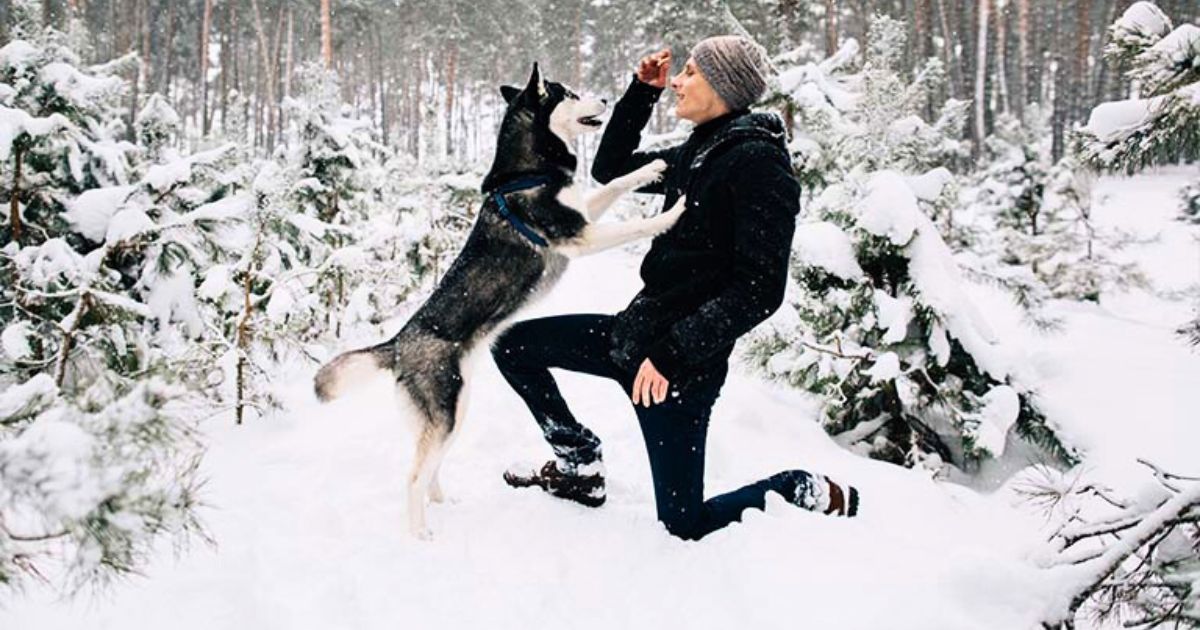
Happy New Year!
When you make your New Year’s resolutions this year, why not include your dog? Popular resolutions such as “get more exercise” can easily include the family pet, and many spiritual, personal growth, environmental, and philanthropical goals can include your best friend, too. Here are our top 7 ideas for including a favorite canine in your New Year’s resolutions.
1. Health and Fitness
New Year’s resolutions for personal fitness are always popular. If you would like to do something to improve your health, consider taking your dog along with you. There’s no need to join a gym and slog it out on a treadmill if you have a dog that enjoys walks—and a comfortable and enjoyable place to walk. The exercise benefits both of you physically and, in the case of your dog, also behaviorally. With a canine companion, you will be more motivated to actually make good on your resolution. In fact, your dog might even hold you accountable!
A high-intensity interval training plan can be a lot of fun for both you and your dog. With this program, low-intensity exercise is interspersed with brief periods of high-intensity exercise. A 30-minute program of high-intensity interval training might look like this:
- walk for 10 minutes at a brisk pace
- jog for 4 minutes
- run for 1 minute
- jog for 4 minutes
- run for 1 minute
- walk for 10 minutes
Changing pace in this way presents a great training opportunity—polish up your loose-leash walking. Start in a large area with your dog on-leash. Click and treat often when your dog is in the correct position, and change your pace frequently in the early training. Pretty soon your dog will be ready to join you for a full high-intensity interval training session, and you might even be ready too!
2. Going Green
A persistent environmental challenge for dog owners is “what to do with all that poop?” Most of it ends up in landfill, and that’s not sustainable. Two environmentally friendly options for dealing with pet waste are dedicated worm farms that are used only for pet waste, rather than for composting mixed waste that includes food scraps, and below-ground composting systems aided by septic tank enzymes. (Note that finished worm castings or compost should only be used on ornamental garden beds, not vegetable crops.) If your pet’s diet is healthy and features natural foods without too many preservatives, the finished product is very good for your plants.
You can find out more about environmentally friendly options for dealing with pet waste here.
3. Inner Peace
Could you use a bit of inner peace? How about your dog?
In the behaviorism camp we don’t pretend to know with certainty how a dog is feeling on the inside, but it’s not unreasonable to consider that a dog with calm behavior is probably calm on the inside, too. Luckily, you don’t need to book expensive sessions with a psychotherapist or take your dog to an ashram somewhere in the Himalayas to get calm behaviors on the outside!
You get what you click. If you can click calm behaviors, you’re going to get more of them. Exactly how to do that is detailed in Emma Parsons’s book The New Click to Calm, but it really is just a case of remembering to click and treat when you see calm behaviors—ones that you like and want more of—while trying not to reinforce behaviors that are not calm (unless they are appropriate for a specific activity). Read my piece on energetic, anxious, and reactive dogs and the Calm-O-Meter, a tool to help calm your pet.
4. Personal Growth and Improving Your Communication Skills
Becoming an effective clicker trainer is a good step on the path to becoming an effective communicator, because clicker training gives you powerful skills for cueing and changing behavior. Clicker training also requires you to make decisions and plan how you will implement them.
It’s a lot of fun—and therefore highly reinforcing—to focus on the creative, spontaneous aspects of clicker training. Watching your dog offer more and more creative behaviors is an enjoyable pastime, but without a plan and a clear goal you’ll just be spinning your wheels.
So, a possible New Year’s resolution might be to make clear dog training and behavior decisions, and plan how you will reach your training goals. Really plan, actually write down your plan and check off each step as you achieve it.
5. Quit a Bad Habit
Does your dog have a bad habit you’d really like him to quit? If you answered “yes” to this question, then your New Year’s resolution could be to determine what you’d like him to do instead of the bad habit, then train it.
Step 1: Identify what is reinforcing this bad habit
Step 2: Look at ways to prevent reinforcement of the bad habit
Step 3: Decide on an alternative or incompatible behavior you would like to see instead of the bad habit
Step 4: Think about how you will train this alternative or incompatible behavior, and break that down into tiny little steps
Step 5: Train those tiny little steps, one at a time
6. Fido Philanthropy
If wanting to help those who are less fortunate is on your list of New Year’s Resolutions, there are many worthy pet-related organizations to support, including: animal shelters, rescue (and breed-specific rescue) organizations, animal welfare groups, bite prevention programs, service dog training and placement agencies, pet-assisted therapy organizations, and search and rescue organizations.
Depending on the organization’s requirements, donations can be made by way of food, toys, blankets, volunteer support, dog walking, or monetary contributions. There’s nothing quite like the feeling of helping others and knowing you’ve done your bit to make the world a better place.
7. Motivate Yourself and Get Started!
If you doubt your ability to even start working on your resolution, apply some clicker training to yourself. Break the task down into achievable pieces, and then find a way to reinforce those pieces of behavior.
All of that should be more than enough to keep you going until 2026!
Happy clicking and a Happy New Year!
Note: This article was originally published on 01/01/2008. We regularly review our content to ensure that the principles and techniques remain valuable and relevant. However, best practices continue to evolve. If you notice anything that may need updating, please feel free to contact us at editor@clickertraining.com.

